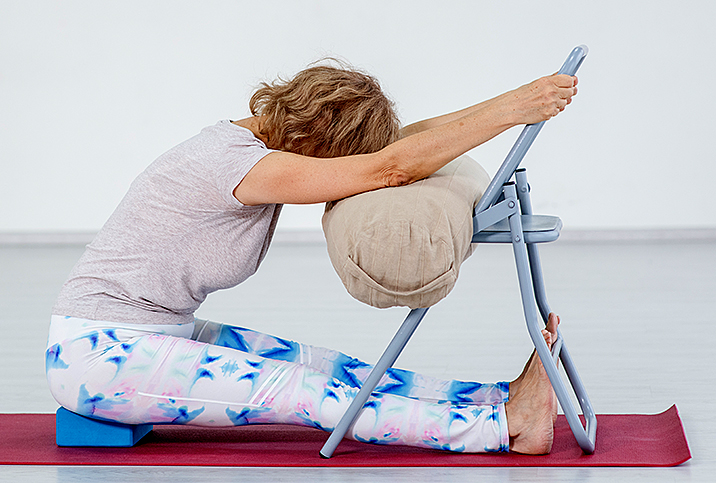Are Kegels Good For Guys, Too?

Urine leakage. Less than firm erections. Weak or premature ejaculation. All of these circumstances are aggravating and can begin to affect men when they reach a certain age, typically their 40s and 50s. But the conditions are usually treatable, sometimes with exercises you can do while sitting at your desk.
Kegels are a method of strengthening the muscles of the pelvic floor that support the bladder and the bowels. Some of the several purported benefits of Kegel exercises for men include preventing urine leakage and premature ejaculation, improving erections and increasing confidence and sexual pleasure.
For some people, Kegels are not an effective treatment and can even cause further issues. Knowing if you should do Kegels is essential for an exercise regimen, so ask a physician to determine whether you might want to try them or pass altogether.
Kegels may improve bladder function
Men can find their pelvic floor muscles by stopping their urine midstream. Try to stop the flow by clenching the muscles around your urethra; also clench the muscles around your anus as if trying to hold in flatulence. Once you've located the muscles, flex them for three to five seconds and then relax for five seconds. Do this 10 times, three to four times a day, every day. You should expect results within a few weeks to a few months.
"Kegel exercises are usually used to treat underlying weakened pelvic floor muscles," said Mehran Movassaghi, M.D., a urologist and the director of men's health at Providence Saint John's Health Center and an assistant professor of urology at Saint John's Cancer Institute in Santa Monica, California.
When the pelvic floor muscles are weakened, urine leaks become more likely. This weakness can occur due to natural aging, reconditioning because of disease, or an injury, as with a prostate injury or surgery, according to Movassaghi.
Kegels can improve bladder function by reducing post-void dribble—the drops of urine that leak after you've finished—and stress urinary incontinence, which often occurs after prostate surgery. Research on post-prostatectomy patients with urinary incontinence has shown that performing pelvic floor muscle exercises can improve their quality of life and incontinence.
Kegels can reduce the sensation of urinary urgency, which becomes more common as men age.
"For those who have urinary urgency, doing pelvic contractions might be an appropriate suggestion for bladder urge suppression," said Susie Gronski, D.P.T., a physical therapist and certified pelvic rehabilitation practitioner in Asheville, North Carolina, and a medical advisor at Aeroflow Urology.
Kegels, ejaculation and ED
Experts have long recommended Kegels for improving sexual function in men. While pelvic floor strengthening may not always be appropriate for people with erectile dysfunction (ED) or premature ejaculation (PE), it can help to some degree.
"If there is true weakness of the pelvic muscles, it is appropriate to focus on pelvic muscle strength and conditioning," Gronski said, adding that pelvic muscle training can and does help to enhance sexual functioning and orgasms given the appropriate context.
"Kegels tighten the pelvic floor muscles; this, in turn, increases blood flow to the penis and the muscle which supports the penis and erections," Movassaghi said.
In a small study of men with erectile dysfunction published in the British Journal of Urology International, 40 percent eliminated ED by performing Kegels for six months. Another 35.5 percent improved their symptoms, while 24.5 percent experienced no change.
"Kegels have also shown to increase the intensity of ejaculation, decrease premature ejaculation and possibly increase the ability to point the penis straighter with erections," Movassaghi added.
If you are experiencing weak ejaculation or delayed ejaculation, Kegels may help as part of a broader treatment plan.
"Kegels focusing on muscles that surround the penis could help with force production and sensory signaling related to genital arousal, muscle control and orgasm," Gronski explained. "Again, I would most likely be focusing on muscle coordination rather than just the contraction."
Kegels may worsen some issues
Some people should avoid Kegels in some instances. For one, benign prostatic hyperplasia (BPH), or prostate gland enlargement, can lead to incontinence, and Kegels can't help since they will not shrink the enlarged tissue.
In some men, Kegels also have the potential to worsen a couple of the same conditions they can help other men overcome.
Men with erectile dysfunction are not always best served by contracting their pelvic floor muscles, despite the many who do benefit. Some guys who fear losing their erection try to maintain it by excessively tensing their pelvic muscles throughout the entire sexual encounter, Gronski said. In such a situation, Kegels are unproductive and may hinder the desired outcome.
The same can be true if premature ejaculation is the problem. As with ED, the reasons for a person's PE matter. Someone with premature ejaculation issues but healthy pelvic floor muscles probably shouldn't focus on Kegels, because these muscles naturally and involuntarily tense during ejaculation.
"Doing more of this would further facilitate the ejaculatory reflex during sex, however, working on pelvic muscle awareness and motor control for this reflex—again, emphasizing the balance between contraction and relaxation—outside of the sexual context would be appropriate," Gronski said.
How to use Kegels effectively
As you can see, Kegel exercises for men aren't inherently "good" or "bad." It's more a question of whether men's tissues can adapt to the demands or loads placed on them in any given context or situation.
"The story about 'Goldilocks and the Three Bears' is a perfect example of 'not too much and not too little,'" Gronski said. "The key is doing just the right amount for the intended function or task."
Kegel exercises for men are not only about the tightening and strengthening action involved. Equally vital is the release after the squeeze, because it enhances the balance between exertion and active recovery, and allows people to use the pelvic muscles' full range of motion, she said.
"In situations like sexual pain, [for example,] ejaculatory pain, where pelvic muscles are involuntarily guarded, habitually tensing and working too hard, I would suggest a focus on muscle coordination and body awareness, emphasizing the experience of relaxation or letting go rather than contracting," Gronski said.
Personalized advice is best
Physiological relaxation is important, but building tissue tolerance and confidence to get back to doing what someone loves is equally important, according to Gronski.
"We can't encourage that if we are telling people to avoid activities or not encouraging them to do what they love and enjoy, including sex," she said.
"A consultation with a pelvic floor specialist, whether a urologist or physical therapist, is optimal, especially when beginning, but if you feel comfortable with it on your own, a moderate daily regimen is acceptable," Movassaghi said.


















